
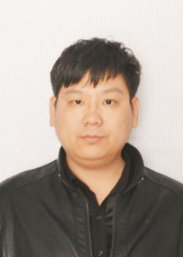
Assoc. Prof. Yonghong Wang
Qingdao University of Technology, China
Profile: Yonghong Wang, Doctor of Engineering, Master Supervisor. His main research interests include pile foundation engineering, pile-soil interaction and pile foundation design methods, geotechnical testing technology, mechanical properties of soil, etc. He has been involved in the research of pile foundation engineering in Shandong Province for the past five years, and has participated in six horizontal research projects.
In the past five years, he has presided over one key research and development program in Shandong Province, one Natural Science Foundation of Shandong Province, six horizontal research projects, and participated in more than 10 national, provincial and ministerial research projects. He has published more than 60 academic papers in domestic and international journals as the first author or corresponding author, including 25 SCI/EI papers, and authorized more than 30 national invention patents, utility model patents and software copyrights. He serves as a reviewer for journals such as Frontiers in Earth Science, Advances in Civil Engineering, Journal of Geotechnical Engineering, Geotechnical Mechanics and Journal of Building Structures. He won the first prize of science and technology in Shandong Province in 2019, the third prize of science and technology in Shandong Province in 2017, the first prize of science and technology in China Business Federation in 2019, the first prize of science and technology in China Business Federation in 2018, the third prize of science and technology in China Circular Economy Association in 2019 and the third prize of science and technology in China Construction in 2019.
Title: Research on Key Technology of Integrated Design and Construction of Offshore Marine Photovoltaic Pile Foundation and Engineering Demonstration
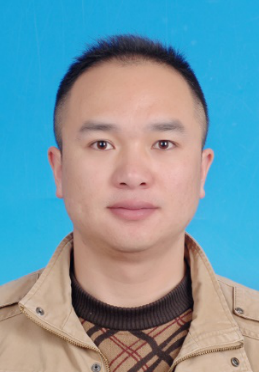
Assoc. Prof. Wei Qin
Wenzhou University, China
Profile: Wei Qin, Ph.D. (Postdoc), Associate Professor, Master's Supervisor, is a "Xinhul" Young Scholar at Wenzhou University, the Director of the Platform Office of the School of Civil Engineering and Architecture, and a member of the Pile Foundation Professional Committee of the Chinese Society for Soil Mechanics and Geotechnical Engineering. He completed both his Bachelor's and Master's degrees at Chongqing Jiaotong University and engaged in joint doctoral training at the Centre for Offshore Foundation Systems (COFS) at the University of Western Australia. He undertook postdoctoral research at the Institute of Engineering Mechanics, China Earthquake Administration, and obtained his Ph.D. from the School of Civil Engineering at Southeast University in 2020. The same year, he began his role at Wenzhou University. His mentors include Academician Du Xiuli, Academician Mark Randolph, Professor Dai Guoliang, and Professor Wang Dong.
His main research areas encompass the full-life service performance and disaster prevention optimized design of pile foundations, soil-structure dynamic response, and soft soil foundation treatment.
He has published over 40 papers in both domestic and international journals such as Computers and Geotechnics and Acta Geotechnica, with more than 20 papers indexed by SCI/EI. He holds 2 U.S. invention patents and 8 domestic invention patents, along with 12 utility model patents. Wei Qin is a reviewer for journals like Acta Geotechnica, Journal of the Brazilian Society of Mechanical Sciences and Engineering (BMSE), Journal of Marine Engineering, Journal of Disaster Prevention and Mitigation Engineering, and the Journal of Shandong University (Engineering Edition). He is a director at the Wenzhou Renewable Energy Society, an expert in the Wenzhou Science and Technology Expert Database, and a member of several professional societies, including the Chinese Civil Engineering Society, the Architectural Society of China, the Geological Society of China, the Chinese Society for Rock Mechanics and Engineering, and the China Highway & Transportation Society.
Title: Mechanism of Underwater Blasting Compaction and Analysis of Key Parameters for Quality Improvement

Prof. Zhong Xiao
Tianjin University, China
Profile: Zhong Xiao, a distinguished professor and Ph.D. supervisor, currently serves as the Party Branch Secretary and Deputy Head of the Department of Port Engineering at the School of Civil Engineering, Tianjin University. He is also the Assistant Dean (practical position training) at the School of Marine Science and Technology. He has been selected for the National Young Talent Program (National Major Talent Program for Young Scholars), the Tianjin "131" Innovative Talent Training Project, and the Ministry of Transport's Talent Program. He is a member of the Technical Committee of the World Transport Convention, an Executive Committee Member of the Expert Committee of the Tianjin Municipal Transportation Commission, a Director of the Tianjin Water Transport Engineering Society, a Technical Committee Member of the CCCC Engineering Software Technology R&D Center, and an Academic Committee Member of the Key Laboratory of River Regulation Technology, Ministry of Transport. His research focuses on the safety, durability, and environmentally friendly intelligent construction and operation technologies of port, shipping, and marine infrastructure.
In recent years, he has led six national research projects and 30 provincial, ministerial, and enterprise-commissioned projects. He has participated in nearly 20 major and key projects of the National Natural Science Foundation and key national R&D projects, as well as enterprise-commissioned projects. He has published nearly 100 papers. As the first principal investigator, he has been awarded the Second Prize of Tianjin Science and Technology Progress Award and the Silver Award in the "Smart Water Cup" National BIM Application Competition for Water Engineering. As a major contributor, he has received the Special Prize of the China Water Transport Construction Industry Association Science and Technology Award, the "Haihe Cup" Tianjin Excellent Survey and Design First Prize, Tianjin Science and Technology Progress Second Prize, Qingdao Science and Technology Progress Second Prize, and Guangdong Excellent Engineering Survey and Design First Prize, among others. He has also won the "First Prize in the Fifth National Young Teachers' Lecture Competition for Water Conservancy Majors," "First Prize for Excellent Online Courses for Postgraduates at Tianjin University," "First Prize for Teaching Achievements at Tianjin University," "First and Second Prize for Graduate Education and Teaching Achievements at Tianjin University," "Young Faculty Model Post at Tianjin University," and "National Excellent Instructor in the National Simulation Innovation Application Competition."
Title: Theoretical and Numerical Analysis of the Sediment Squeezing Effect in Immersed Tunnels Based on the Coupled Eulerian-Lagrangian (CEL) Method
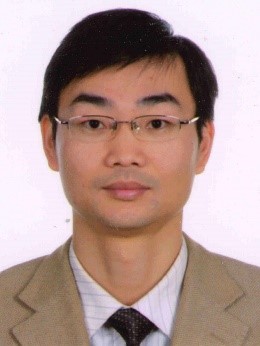
Assoc. Prof. Pengfei Zhou
Dalian University of Technology, China
Profile: Pengfei Zhou, holds a Ph.D. from Dalian University of Technology with a specialization in Port, Coastal, and Offshore Engineering. His primary research areas include maritime simulation and logistics management, digital twins and intelligent scheduling, intelligent operation and maintenance with digitalization and informatization, resource development, and green engineering. He has received several awards, including the Second Prize of Henan Provincial Science and Technology Award in Transportation and the Henan Provincial Transportation Science and Technology Award.
Title: Whole Life-cycle Structural Monitoring and Intelligent Operation and Maintenance Technology with Digital Twin

Prof. Yujiang Wang
Southeast University, China
Profile: Yujiang Wang is a male professor and Ph.D. supervisor who has been selected for the National Major Talent Project and the second tier of Jiangsu Province's 333 High-Level Talent Training Project. He currently holds several important positions, including being a committee member of the International Union of Laboratories and Experts in Construction Materials, Systems and Structures (RILEM) TC-CEC, an expert committee member of the China Waterproofing and Repair Materials and Engineering Technology Sub-Association, Deputy Director of the Youth Scientists Specialized Committee of the 10th Standing Committee of Jiangsu Association for Science and Technology, and the Chief Expert for Urban Rail Transit Construction in Jiangsu Province.
He has led more than 20 scientific research projects, including key projects of the National Key Research and Development Program and projects funded by the National Natural Science Foundation of China. He holds more than 50 authorized invention patents and has contributed to the development of seven industry/local standards. As a principal contributor, he has been awarded the National Scientific and Technological Progress Second Prize (ranked 3rd), Jiangsu Province Science and Technology First Prize (ranked 3rd), the First Prize of the China Building Materials Federation Science and Technology Advancement Award (ranked 4th), and a Gold Prize at the first Jiangsu Province Patent Awards. As a core team member, he has also been honored with the "National Excellent Engineer Team" award.
Title: Research on Crack Control Technologies for Mass Concrete in the Pinglu Canal Hub Project
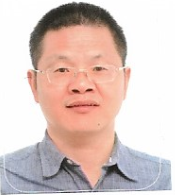
Prof. Hanqiao Liu
Tianjin Chengjian University, China
Profile: Hanqiao Liu is a professor at Tianjin Chengjian University, recognized as a leading academic talent in Tianjin’s higher education sector. He is also an expert in environmental protection technology in Tianjin and an outstanding advisor for engineering professional degrees in the region. He serves as an expert in the chemical and waste environmental management think tank at the Basel Convention Asia-Pacific Regional Center. Additionally, Liu is a member of the Academic Committee of Tianjin Chengjian University and a leading figure in key disciplinary areas at the university. He is also a technical committee member of the “Tianjin Municipal Safe Disposal Technology Engineering Center for Waste Incineration Fly Ash,” an editorial board member of the journal "Environmental Sanitation Engineering," and a National Natural Science Foundation review expert. Furthermore, he is a reviewer for journals such as the Journal of Hazardous Materials.
Liu has received the Tianjin Science and Technology Progress Award twice and the second prize in the Tianjin Intellectual Property Innovation and Entrepreneurship Invention and Design Competition. He has published over 70 academic papers in domestic and international academic journals and has led more than 20 national and provincial-level projects. Liu has applied for 56 patents, with 21 patents having been granted. His main research areas include circular economy and life cycle assessment, high-efficiency clean conversion and utilization of biomass technology, resource utilization of solid waste, harmless treatment and utilization of incineration fly ash, and resource and environmental management and policy. His research involves multidisciplinary intersections.
Title: Research and Development of High-Value Utilization Technology for Solid Waste and Its Life Cycle Assessment
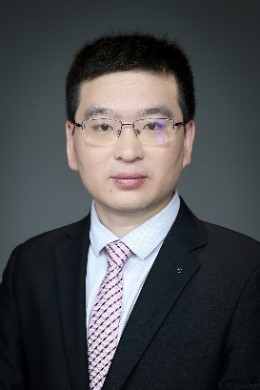
Associate Researcher Linfeng Zhang
Southeast University, China
Profile: Dr. Linfeng Zhang graduated in 2016 from the School of Civil Engineering at Hunan University with a specialization in Heating, Gas Supply, Ventilation, and Air Conditioning Engineering. From 2017 to 2019, he conducted postdoctoral research at the Department of Architecture and Civil Engineering at City University of Hong Kong. In 2019, he joined the Department of Underground Engineering at the School of Transportation, Southeast University. His research primarily focuses on the optimization and control of ventilation and energy systems in underground engineering. He has been in charge of six projects, including a national key R&D project and a National Natural Science Foundation Youth Project. Dr. Zhang has published over 20 papers, which have been cited more than 450 times on Google Scholar and over 400 times in Web of Science. His work has garnered attention from several renowned international experts, including Professor H. R. Thomas in environmental geotechnics and Professor J. D. Spitler in the geothermal field, with Professor Spitler praising his studies as "noteworthy." In 2015, Dr. Zhang received the second prize of the Hunan Provincial Science and Technology Progress Award.
Title: Research on Carbon Emission Accounting Methods and Carbon Reduction Pathways in Artificial Island Construction

Assoc. Prof. Yue Song
Tianjin University, China
Profile: Dr. Yue Song, a master's supervisor from Rizhao, Shandong, has been engaged in research on wave-structure interactions, floating and mooring installation technology for immersed tunnel elements, hydrodynamics of flexible net structures, and performance optimization of offshore floating anti-collision systems. His work involves theoretical analysis, model experiments, and numerical simulations to study the dynamic response of various complex floating systems from nearshore to deep and open sea, leading to several innovative research achievements. Dr. Song has published over 20 papers in international SCI-indexed journals, including the top-tier journals "Tunnelling and Underground Space Technology" and "Ocean Engineering." Currently, he is leading a National Natural Science Foundation Youth Project, a project funded by a National Key Laboratory Open Fund, and two university-commissioned research projects. Additionally, he has been a technical backbone in two National Natural Science Foundation projects and over ten commissioned engineering projects from enterprises and institutions.
Title: Research on Key Technologies for Floating Transportation and Immersion of Large Immersed Tunnel Elements

Assoc. Prof. Zhe Tian
Ocean University of China, China
Profile: Zhe Tian is an associate professor and master's supervisor. His research focuses on dynamic coupling analysis methods for ship structures, big data processing technology for offshore wind power structures, and their engineering applications. He has led and participated in four research projects, including the Youth Science Fund under the National Natural Science Foundation. Dr. Tian has received several awards and honors, such as the Second Prize for Scientific and Technological Progress in the Outstanding Achievements of Higher Education from the Ministry of Education, the Special Prize for Scientific and Technological Progress from the China Institute of Navigation, and the First Prize in the National Marine Vessel Design and Construction Competition (as a supervising teacher).
Title: The Real-Time Measurement Technology and Equipment for Near-Field Waves During Offshore Construction